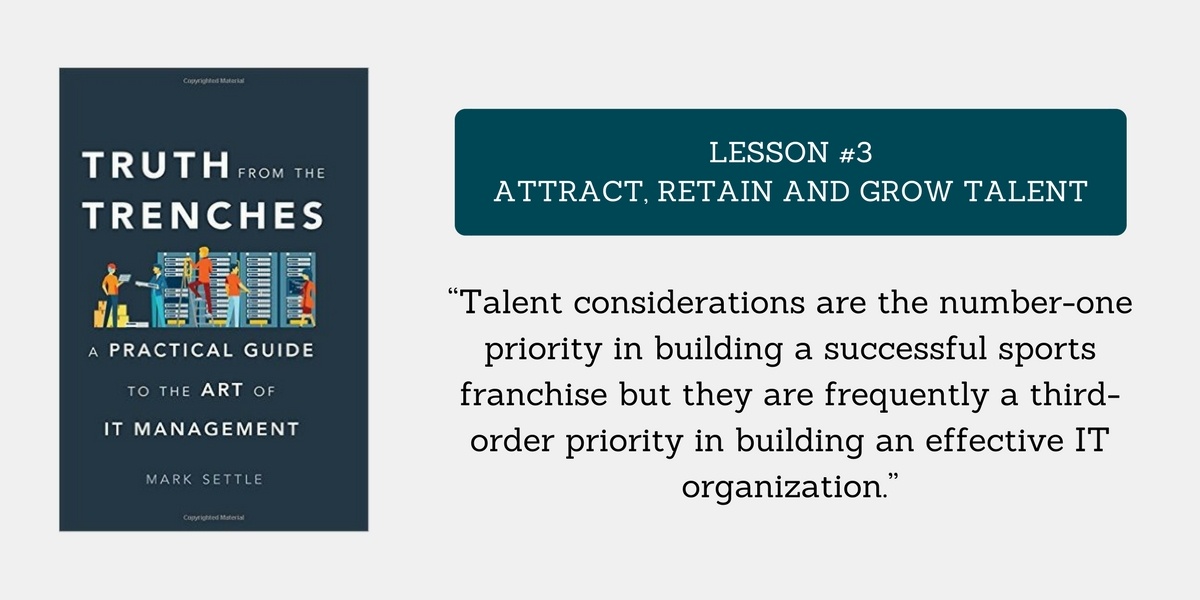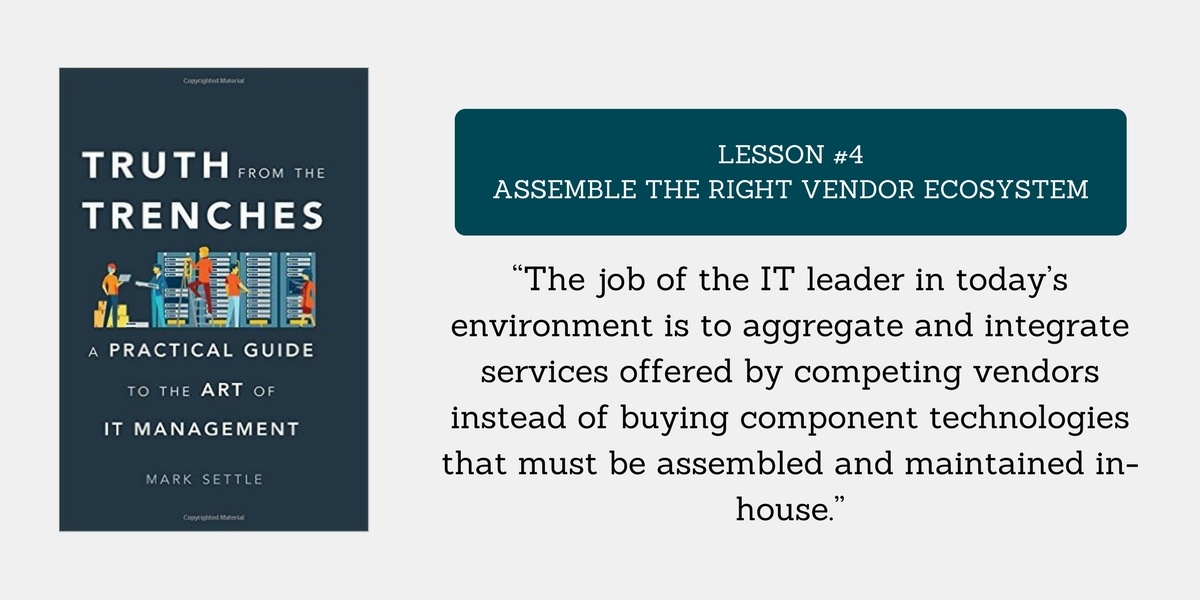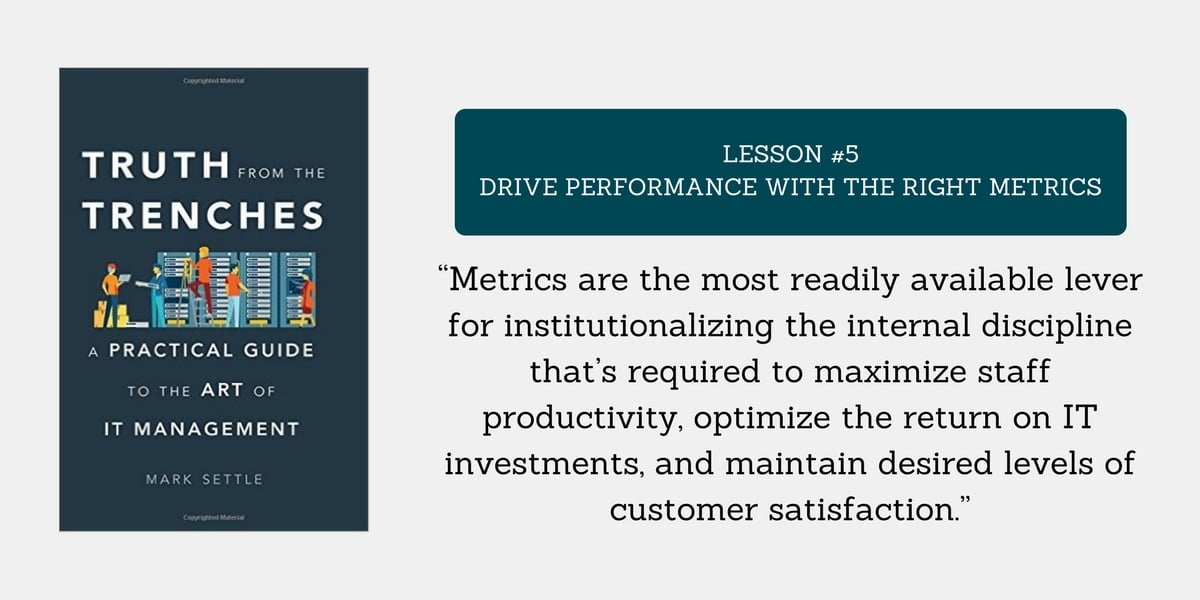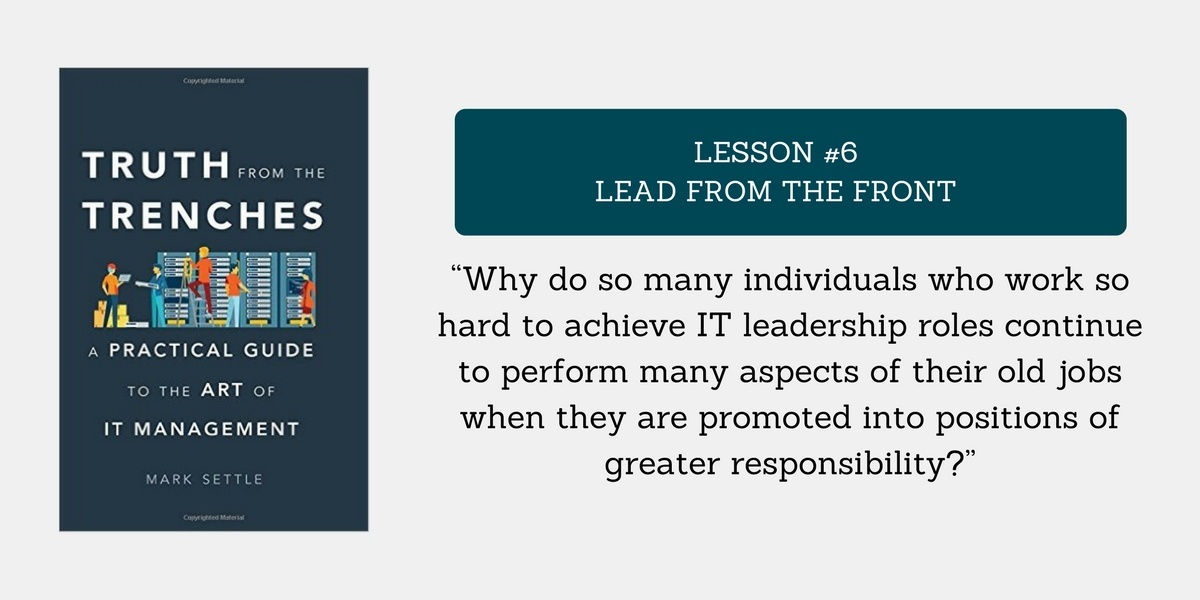A recent study by search firm Korn Ferry found that Chief Information Officers (CIOs) have an average tenure of 4.3 years. Most CIOs don't last for five years at an organization and have the second shortest job tenure for C-suite members! It's little wonder, then, there's an army of experts whose only job seems to be offering advice on how CIOs can do their jobs better.
A Google search 'Advice for new CIO' returns close to 8 million results. Analyst firms like Gartner and Forrester exhort CIOs to adopt the latest shiny object or suffer the consequences. Consultants such as McKinsey or Accenture publish regular studies on how CIOs should cope with digital transformation, cloud management, or the ever-popular business-IT alignment.
What if you had access to advice from an actual CIO, who's been at the job for more than two decades across seven leading enterprises? Mark Settle, currently the CIO at identity management provider, Okta, has written a fantastic book, Truth from the Trenches: A Practical Guide to the Art of IT Management, that does exactly that. Mark shares practical insights (‘the unwritten rules’) on how to lead and manage an IT organization. The primary purpose of the book is to “identify the pitfalls that can so easily undermine the success of aspiring IT leaders.”
Given that there are few prescriptive IT management frameworks, the only way to become a great IT leader is through experiential learning. How do you manage the things you can control while seizing opportunities when they present themselves? Given that IT management is “more craft than science”, Truth from the Trenches aims to impart best practices that will help IT leaders avoid the mistakes committed by their predecessors.

How do IT leaders build the critical skills and credibility that will earn the trust of business leaders? Here are seven best practices that will help you build the trifecta of technical, business and interpersonal skills:
Lesson #1 - Know Your Numbers Cold.jpg)
IT spending ranges from 5 to 10 percent of expenses and IT employees account for 3 to 10 percent of headcount. How do IT leaders answer the perennial question, “Why does IT cost so much and what do all those people do?”
It is the responsibility of every IT leader to explain why IT investments support the complete portfolio of business services. IT leaders should be comfortable discussing a wide variety of financial metrics with business executives.
You should know the unit cost and total cost of labor, procurement and licensing costs of vendor products and best-in-class costs for delivering an IT service. Learn to associate IT spending with revenue generating activities like sales and marketing, manufacturing or supply chain. Unless you are financially literate, you will not get approval for the IT investments you need to make the company successful.
Lesson #2 - Build Relationships
One way IT can drive value creation is to optimize critical business processes like lead generation, accounts receivable and inventory management. IT can’t re-engineer a business process without the cooperation of its business. IT leaders need to have effective working relationships and be seen as seasoned business executives before they get a chance to improve organizational processes.
Build two-dimensional relationships with business counterparts. Two-dimensional relationships have both a social and business component. Cultivate the social component (learn about interests, education, family and favorite sports of a business leader) and you have the foundation for an effective relationship. The business dimension involves the ability to cultivate general and business knowledge. Seek opportunities to learn about your organization by joining strategy sessions, quarterly business reviews or traveling with business executives.
Finally, your own IT team should like and respect you! Build social and career development dimensions with all your direct reports. Understand the career aspirations of your team members and provide the right feedback and development opportunities for them to grow.
Lesson #3 - Attract, Retain and Grow Talent
IT organizations spend a lot of time selecting and implementing the right tools and optimizing internal processes. If they have any time left, IT leaders then focus on hiring and developing staff. People are the true competitive lever as most technologies and business practices are available in the public domain.
Talent helps you get the most bang for your technology buck. How should IT leaders build the right talent mix in their teams? IT leaders should first create a ‘strategic staffing plan’ based on their company’s growth plan. Strategic staffing plans describe job titles, skills mix, and headcount for each functional unit.
Build a prospective talent pipeline by tapping into your network, interacting with vendors and participating in local industry events. Promote staff members by testing them with the right assignments. Provide challenging projects that take individuals out of their comfort zones and help them build new skills. Ask your infrastructure architect to lead a new business intelligence project. Or, have your database manager deliver an information security assignment.
Lesson #4 - Assemble The Right Vendor Ecosystem

A decade ago, IT teams would study the capabilities of different products, select vendor tools that made sense and then assemble them into relevant solutions. Today, with on-demand, packaged capabilities from cloud vendors, IT teams are more concerned with matching vendor capabilities to internal business processes.
As enterprises transition from the caveman era to the on-demand age, IT leaders are much more dependent on vendors. Enterprises have ceded control of their application and infrastructure stack to vendors in exchange for greater agility and reduced costs. IT leaders will need to assemble the ‘right supplier ecosystem’ to ensure the highest levels of functionality, integration, and security. IT leaders that assemble the broadest platform capabilities for their business needs will win in the market.
Lesson #5 - Drive Performance With The Right Metrics
Metrics are important because they establish reality in a large IT organization and create the right behaviors across teams. Metrics track financial investments, operational performance, customer satisfaction, business results or organizational morale.
There’s no one right set of metrics for every situation. IT leaders should choose the most appropriate metrics for a specific initiative. Once you’ve selected the right metrics, how you use metrics is even more critical. Display metrics on large screen TVs or create posters to cascade key metrics throughout the IT organization.
IT executives should review, discuss, celebrate and debate metrics at every occasion. If a metric is drifting in the wrong direction, managers should dig deeper. Assemble a team to learn and correct the downtrend.
Lesson #6 - Lead From The Front
The role of an IT leader is to avoid all routine tasks. Instead of micromanaging their teams, leaders should engage in outreach efforts beyond the IT organization. Unless you spend time outside your team, you will never achieve "objective reality."
Leaders learn the true effectiveness of their IT organization only when they talk to business executives, external consultants, and vendors. Meeting with other IT leaders helps you compare best practices and place vendor claims in context. Outreach efforts should be front and center of an executive’s agenda because these activities enhance the business impact of IT teams.
Lesson #7 - Embrace Your Inner Chancellor.jpg)
How do IT leaders find the courage and willpower to push through transformational change? Most IT leaders are romantics like Don Quixote who proclaim “transformative initiatives that, rarely, if ever, gain traction.”
IT managers should take a leaf from Chancellor Otto von Bismarck who used the art of realpolitik to unify and lead Germany. Effective IT leadership is all about the “art of the possible.” IT executives should combine intuition, courage and hard work to push for change in the real world.
Conclusion
Truth from the Trenches is a brilliant tome packed with wit and wisdom. If you’re an IT leader or manager, invest a few hours for some pragmatic insights. On the other side of the fence, a technology vendor’s product, sales, and marketing teams will understand how an IT leader thinks. Go ahead and grab your copy today!






